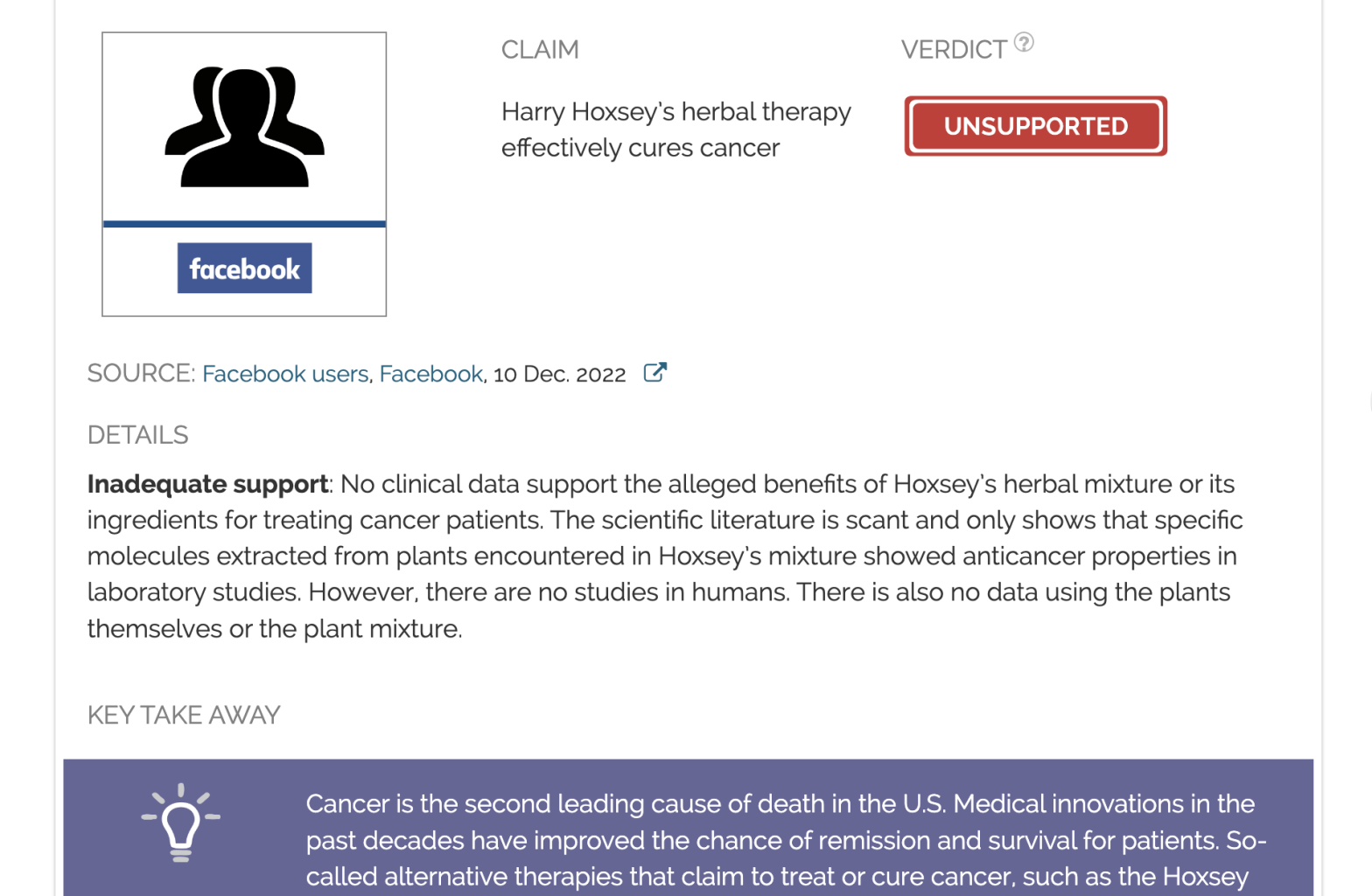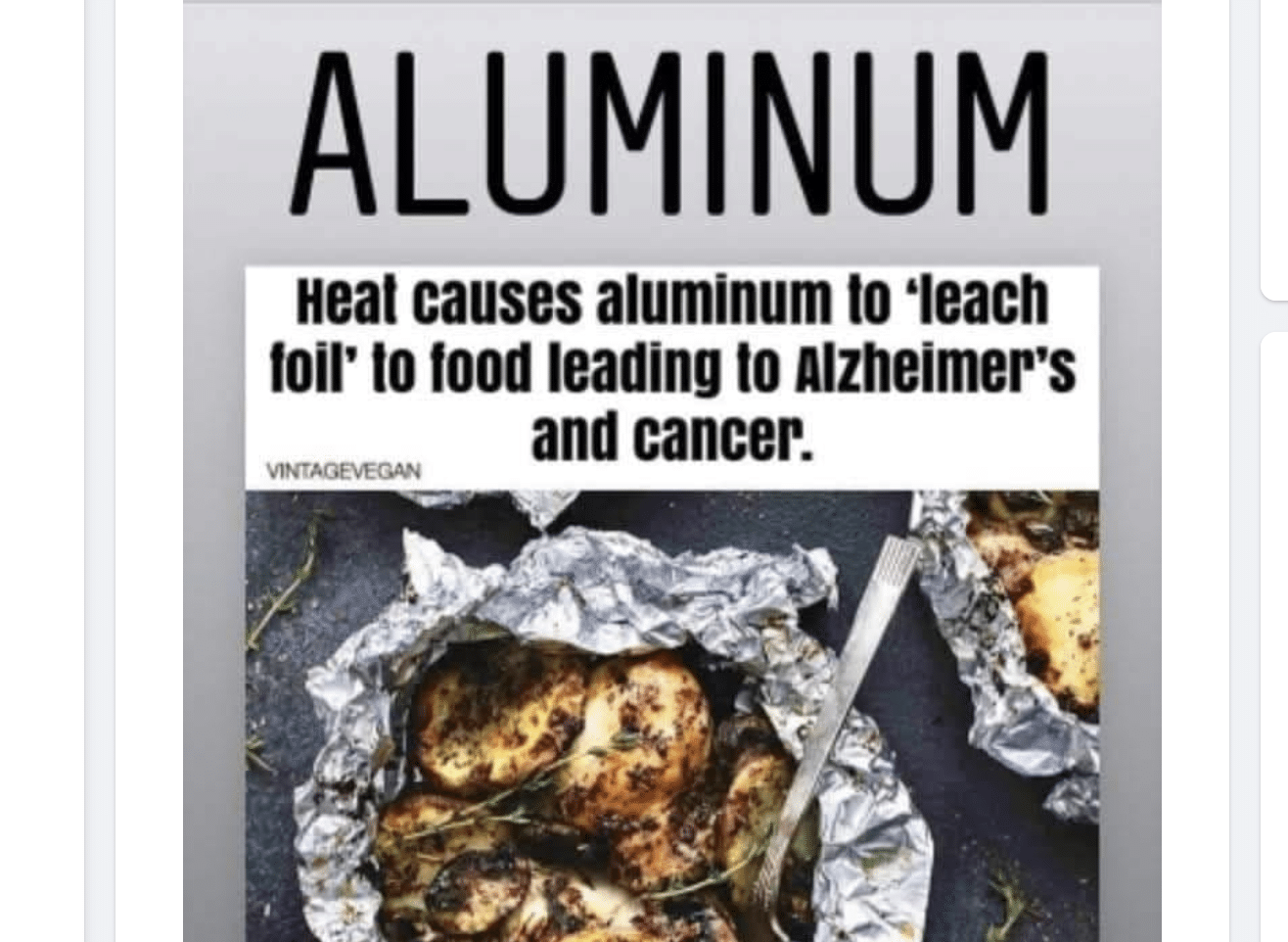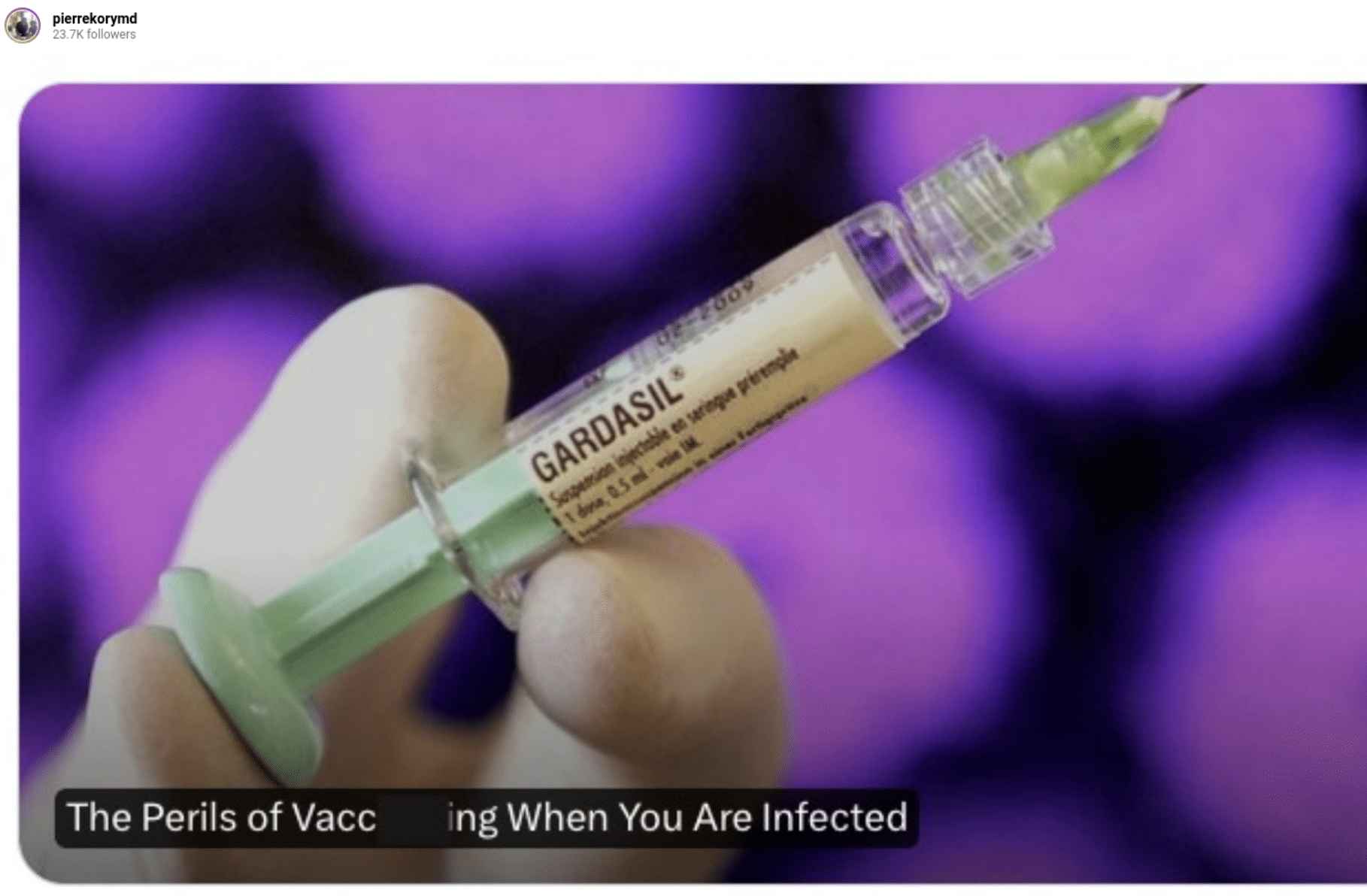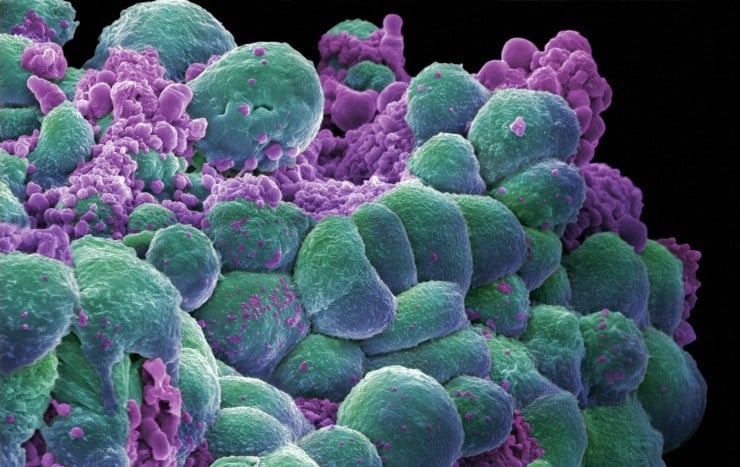- Health
The Hoxsey herbal mixture doesn’t cure cancer
Key takeaway
Cancer is the second leading cause of death in the U.S. Medical innovations in the past decades have improved the chance of remission and survival for patients. So-called alternative therapies that claim to treat or cure cancer, such as the Hoxsey herbal therapy, are prevalent on social media but aren’t supported by scientific evidence. Such unproven therapies not only don’t cure cancer but can be harmful and delay effective medical treatment.
Reviewed content

Verdict:
Claim:
Harry Hoxsey’s herbal therapy effectively cures cancer
Verdict detail
Inadequate support: No clinical data support the alleged benefits of Hoxsey’s herbal mixture or its ingredients for treating cancer patients. The scientific literature is scant and only shows that specific molecules extracted from plants encountered in Hoxsey’s mixture showed anticancer properties in laboratory studies. However, there are no studies in humans. There is also no data using the plants themselves or the plant mixture.
Full Claim
Harry Hoxsey’s herbal therapy effectively cures cancer
Review
Although the number of deaths from cancer significantly decreased over the past years owing to treatment and diagnostic advances, cancer still represented the second cause of death in the U.S. in 2020.
Unfortunately, the emotional burden of cancer on patients and their relatives has provided fertile ground for the development and propagation of cancer misinformation and treatment hoaxes. Cancer misinformation can have dire consequences, from misleading patients into spending money on fake treatments to diverting them from proven, effective therapies.
One long-lasting narrative about alternative cancer treatment is that a man called Harry Hoxsey developed a herbal therapy able to cure all forms of cancer back in the 1920s. Even though the U.S. Food and Drug Administration (FDA) had warned about the lack of supporting evidence already in 1956, some content on social media still claims that Hoxsey cured patients with herbs and was persecuted by medical organizations because of that. However, there is no scientific data whatsoever supporting any benefits of the Hoxsey herbal therapy against cancer, as we will detail below.
Harry Hoxsey began promoting a herbal mixture as a cure for cancer during the first half of the twentieth century and opened clinics where he and his staff diagnosed patients with cancer and offered them his treatment. Following a legal battle with the FDA and the American Medical Association (AMA), who challenged the scientific ground of Hoxsey treatment, Hoxsey was forced to put an end to his activity in the U.S.
These legal decisions were rooted in the fact that there are no scientific results supporting the claim that the Hoxsey herbal mixture cures cancer. According to the Memorial Sloan Kettering Cancer Center (MSKCC), “The American Cancer Society strongly urges cancer patients not to use the Hoxsey treatment”.
To begin with, there are no clinical trials assessing the effectiveness of Hoxsey herbal mixture.
Clinical trials are considered the gold standard to assess whether a therapy is effective at treating a given disease. During clinical trials, clinicians evaluate the effect of the new therapy on the progression of cancer, the number of patients entering into remission, or how long people are able to survive after receiving the treatment. However, no such study is available regarding the Hoxsey herbal mixture.
In fact, the FDA investigated the cases of 400 patients that Hoxsey had allegedly cured. The FDA found that some of them actually never had cancer and were misdiagnosed by Hoxsey and his staff, some of them had cancer but had received proven therapies already, while the others were still suffering from cancer or had died at the time of the investigation[1]. Investigations on cancer patients who visited a Hoxsey clinic in Mexico in 1999 found that the majority died later on, contradicting the claim that Hoxsey’s therapy was an effective cancer cure.
Furthermore, there is no conclusive evidence indicating that the herbal components of the Huxsey mixture have anticancer properties. According to the MSKCC, the main mixture is made of “licorice, red clover, burdock root, stillingia root, barberry, cascara, pokeweed, prickly ash bark, and buckthorn bark”. Queries on the scientific literature repository Pubmed& turned up only limited data.
We found no scientific publications reporting an anticancer effect of red clover, stillingia root, cascara, and buckthorn. Some studies found that certain molecules extracted from the other plants present in the mixture showed anticancer effects in vitro—in laboratory test tubes and Petri dishes[2-5]. However, the fact that an isolated molecule produces a certain effect doesn’t mean that consuming a plant containing that molecule will also produce the same effect. This will depend on many factors as the amount of molecules in the plant and its bioavailability.
Furthermore, results obtained in cell culture experiments aren’t always predictive of what happens in the human body, given that a living organism is far more complex than a group of cells growing in a dish in the laboratory. Even animal experiments aren’t fully predictive of what happens in humans. All drug candidates are first tested in animals and later on in humans during clinical trials. However, it is also important to note that 95% of cancer drug candidates fail to pass clinical trials[6].
In conclusion, there is no data supporting the claim that the Hoxsey herbal mixture is an effective cure for cancer. Neither the mixture nor its ingredients have been evaluated in clinical trials to assess their anticancer properties in humans. The American Cancer Society recommends avoiding the Hoxsey mixture and seeking proven medical treatments.
REFERENCES:
- 1 – American Cancer Society (1990) Hoxsey method/bio-medical center. CA: a cancer journal for clinicians.
- 2 – Wang et al. (2020) A Review: The Anti-inflammatory, Anticancer and Antibacterial Properties of Four Kinds of Licorice Flavonoids Isolated from Licorice. Current Medicinal Chemistry.
- 3 – Ek et al. (1998) Antitumor activity of TP3(anti-p80)-pokeweed antiviral protein immunotoxin in hamster cheek pouch and severe combined immunodeficient mouse xenograft models of human osteosarcoma. Clinical Cancer Research.
- 4 – Grabarska et al. (2021) Palmatine, a Bioactive Protoberberine Alkaloid Isolated from Berberis cretica, Inhibits the Growth of Human Estrogen Receptor-Positive Breast Cancer Cells and Acts Synergistically and Additively with Doxorubicin. Molecules.
- 5 – Lou et al. (2017) Arctigenin, a lignan from Arctium lappa L., inhibits metastasis of human breast cancer cells through the downregulation of MMP-2/-9 and heparanase in MDA-MB-231 cells. Oncology Reports.
- 6 – Hickman et al. (2014) Three-dimensional models of cancer for pharmacology and cancer cell biology: Capturing tumor complexity in vitro/ex vivo. Biotechnology Journal.
NOTE:
& : The queries used were as follows:
(“Trifolium pratense”[Title] OR “red clover”[Title]) AND (cancer*[Title] OR anticancer*[Title] OR antitumor*[Title] OR tumor*[Title])
(“Arctium lappa”[Title] OR “burdock root”[Title]) AND (cancer*[Title] OR anticancer*[Title] OR antitumor*[Title] OR tumor*[Title])
(“Stillingia sylvatica”[Title] OR “stillingia root”[Title]) AND (cancer*[Title] OR anticancer*[Title] OR antitumor*[Title] OR tumor*[Title])
(“berberis”[Title] OR “barberry”[Title]) AND (cancer*[Title] OR anticancer*[Title] OR antitumor*[Title] OR tumor*[Title])
(“Frangula purshiana”[Title] OR “cascara”[Title]) AND (cancer*[Title] OR anticancer*[Title] OR antitumor*[Title] OR tumor*[Title])
(“Phytolacca americana”[Title] OR “pokeweed”[Title]) AND (cancer*[Title] OR anticancer*[Title] OR antitumor*[Title] OR tumor*[Title])
(“Zanthoxylum americanum”[Title] OR “prickly ash”[Title]) AND (cancer*[Title] OR anticancer*[Title] OR antitumor*[Title] OR tumor*[Title])
(“buckthorn”[Title]) AND (cancer*[Title] OR anticancer*[Title] OR antitumor*[Title] OR tumor*[Title])



